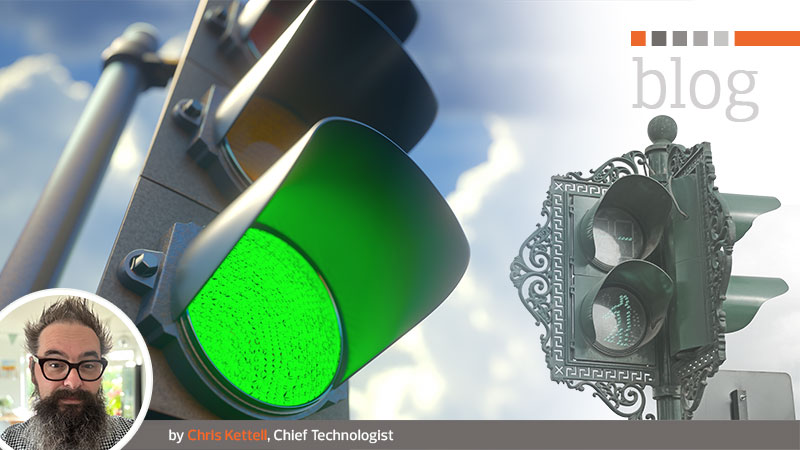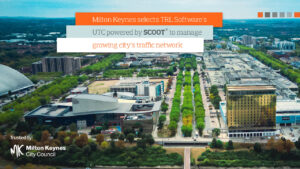World Traffic Light Day, observed annually on 5th August, holds particular significance for Great Britain, where the world’s first traffic light was installed in 1868 outside the Houses of Parliament in London, only to explode spectacularly 23 days later. From that dramatic Victorian beginning to today’s sophisticated adaptive systems, the UK has consistently pioneered traffic management innovations that have shaped urban mobility worldwide.
An explosive beginning
The story begins with John Peake Knight, a Nottingham-born railway signalling engineer who in 1868 proposed adapting railway semaphore signals for London’s increasingly chaotic streets. His motivation was stark: in 1866 alone, 1,102 people were killed and 1,334 injured on London roads. The world’s first traffic light was installed on 9th December 1868 at the junction outside the Houses of Parliament.
The 20-foot Gothic structure featured ornate cast-iron construction with gas powered red and green lamps. During daylight hours police constables manually operated the semaphore arms. The system initially proved successful with contemporary reports noting that drivers were “fairly amenable to the signals.” However, this pioneering experiment ended catastrophically on 2nd January 1869 when a gas leak caused an explosion that seriously injured the operating police constable.
The traumatic failure led to complete abandonment of mechanised traffic control in Great Britain for almost 60 years.
The wilderness years and triumphant return
Following the 1868 disaster traffic lights vanished entirely from British streets. During the 1920s traffic control reverted to police officers using hand signals and whistles, whilst electric traffic signal technology developed at pace in the United State of America. It was not until 1925 that the first electric traffic lights returned to London at St James’s Street and Piccadilly Circus.
The 26th August 1926 marked a crucial milestone with the installation of the first manually operated three-colour traffic lights in Piccadilly. Wolverhampton became the first British town to test automated traffic lights on 11th February 1928, followed by the first permanent automated systems in Leeds and Edinburgh in March 1928.T he 1930s saw rapid expansion across Britain, with the Road Traffic Act 1930 making disobedience to traffic signals a legal offence. By 1932, the first vehicle-actuated lights were installed by Plessey at the Cornhill-Gracechurch junction in the City of London.
The David Mellor revolution
The 1960s brought the most significant transformation in British traffic light design. Following a 1963 Ministry of Transport report identifying outdated traffic management systems, David Rogerson Mellor CBE FCSD RDI was commissioned to completely redesign the UK’s traffic signal system. His revolutionary design for traffic signals was first introduced in 1968 and featured blow-moulded polypropylene construction for durability, enhanced optical systems improving visibility, and standardised 12-inch diameter lights. The Mellor design became the template for British traffic signals, manufactured by companies including Plessey, GEC, and Siemens throughout the following decades. This standardisation coincided with the integration of inductive loop detectors embedded in road surfaces, enabling vehicle-actuated control systems
SCOOT: Great Britain’s revolutionary adaptive control system
Britain’s most significant contribution to global traffic management came with the development of SCOOT® (Split Cycle Offset Optimisation Technique) by the Transport Research Laboratory beginning in 1973. This groundbreaking system represented a quantum leap from fixed-time signals to real-time adaptive control.
SCOOT® automatically adjusts signal timings every few seconds based on live traffic data, providing 12% average reduction in vehicle delays, 8% reduction in stops where installed, and 20% improvement over outdated fixed-time systems. The system achieved benefit-cost ratios often exceeding 30:1, with some implementations showing ratios above 50:1. By the 1990s, SCOOT® was operational in over 350 cities globally, establishing Great Britain as the world leader in intelligent traffic management.
TRL Software today continue to deliver world leading traffic control with TRL UTC with SCOOT 7® in helping Local Authorities achieve more equitable access for other modes beside the car. Buses, Cyclists, Pedestrians.
Cultural impact and urban planning legacy
Traffic signals have profoundly influenced British urban development and cultural behaviour. The integration with bus priority systems has supported public transport culture, whilst toucan crossings and advanced stop lines accommodate Britain’s growing cycling infrastructure. The distinctive red-amber phase has shaped British driving behaviour, creating a unique preparation period not found in most countries.
Uniquely British innovations in pedestrian safety
The UK continued to develop distinctive pedestrian crossing systems with characteristically British terminology that has become part of national culture:
Pelican Crossing (1969): Originally “PELICON” (PEdestrian LIght CONtrolled), the first light-controlled pedestrian crossing operated by pedestrians themselves.
Puffin Crossing: “Pedestrian User-Friendly INtelligent” crossing with near-side signals and pedestrian detection sensors.
Toucan Crossing: “Two CAN cross” allowing both pedestrians and cyclists.
Pegasus Crossing: Equestrian crossing with higher-mounted buttons for horse riders.
These systems, combined with Britain’s distinctive four-phase signal sequence (red, red-amber, green, amber), created a uniquely British approach to traffic control that influenced Commonwealth countries and European standards.
Conclusion: from Victorian explosion to smart city leadership
The journey from John Peake Knight’s explosive Victorian experiment to today’s AI-enabling future, adaptive systems demonstrates Britain’s remarkable resilience and innovation in traffic management. The traumatic 1868 explosion, rather than ending British traffic signal development, created a 60-year pause that ultimately led to more sophisticated solutions.
Britain’s development of SCOOT® adaptive control, distinctive pedestrian crossing systems, and integration with environmental monitoring has established the UK as a global leader in intelligent transportation. As World Traffic Light Day is observed each August, Britain’s traffic signal legacy extends far beyond historical firsts, embodying the nation’s capacity to transform challenge into innovation, creating systems that serve not just British roads but cities worldwide.



